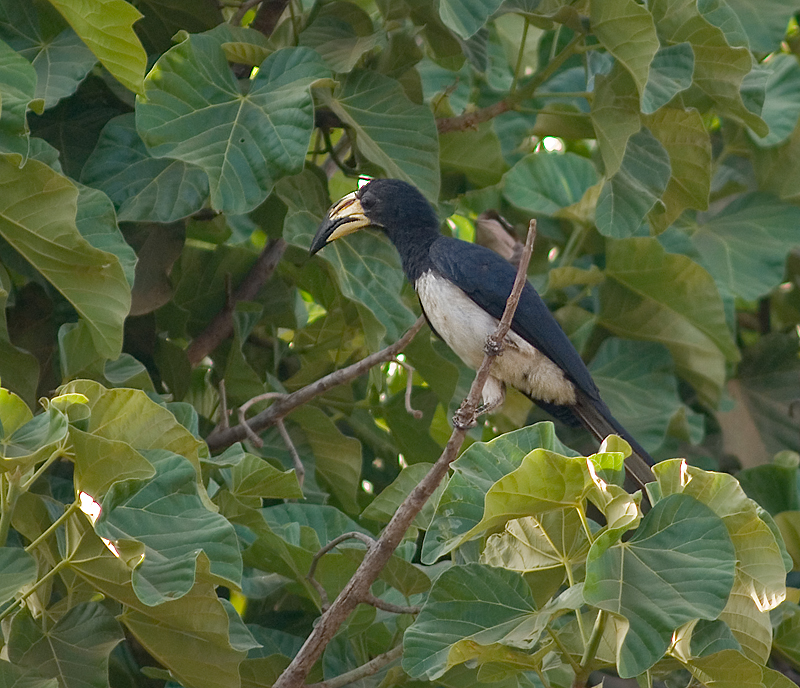ERROR : Server Busy(-1105)
ERROR : Server Busy(-1105)
African Pied Hornbill (Tockus fasciatus) - Wiki
African Pied Hornbill
From Wikipedia, the free encyclopedia
Order: Coraciiformes
Family: Bucerotidae
[Photo] African Pied Hornbill (Tockus fasciatus). 15.4.2007, Gambia. Source: Flickr (http://www.flickr.com/photos/mattisj/480392357/). Author: http://www.flickr.com/photos/mattisj/
African Pied Hornbill, Tockus fasciatus, is a hornbill. Hornbills are a family of tropical near-passerine birds found in the Old World.
African Pied Hornbill is a common resident breeder in much of equatorial Africa from The Gambia to western Uganda and northern Angola.
This is a bird mainly of forest habitats. The female lays up to four white eggs in a tree hole, which is blocked off during incubation with a cement made of mud, droppings and fruit pulp. There is only one narrow aperture, just big enough for the male to transfer food to the mother and the chicks.
When the chicks and the female are too big to fit in the nest, the mother breaks out and rebuilds the wall, then both parents feed the chicks.
This is a large bird, at 54cm in length. It has mainly black plumage, with the belly and tip to the tail being white. The long curved black and yellow bill has a medium sized casque.
Sexes are similar, but the female has a smaller casque. Immature birds are duller, have a smaller bill, and no casque. The flight is undulating.
African Pied Hornbill is omnivorous and eats fruit and insects. It feeds mainly in trees, and is attracted to Oil Palms.
This conspicuous and gregarious bird advertises its presence with its whistling pii-pii-pii-pii- call.
http://en.wikipedia.org/wiki/African_Pied_Hornbill
| The text in this page is based on the copyrighted Wikipedia article shown in above URL. It is used under the GNU Free Documentation License. You may redistribute it, verbatim or modified, providing that you comply with the terms of the GFDL. |
|

